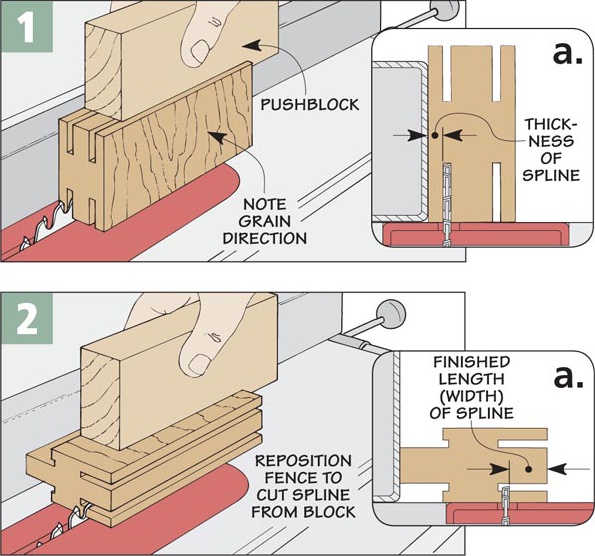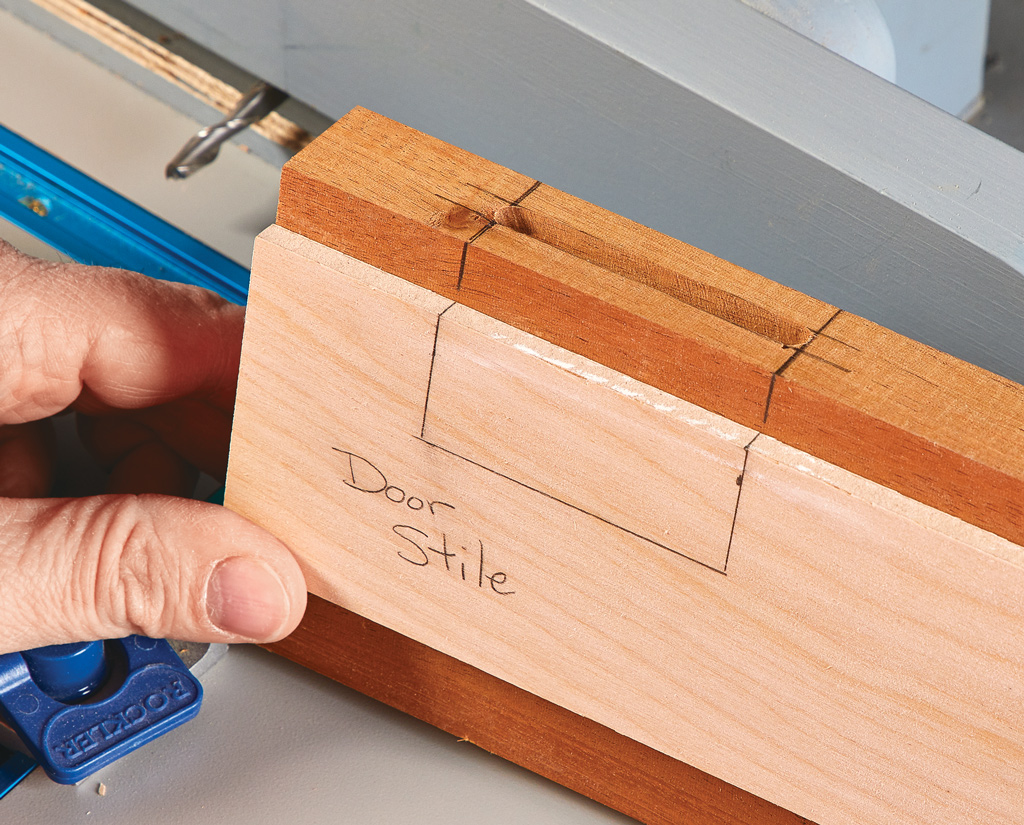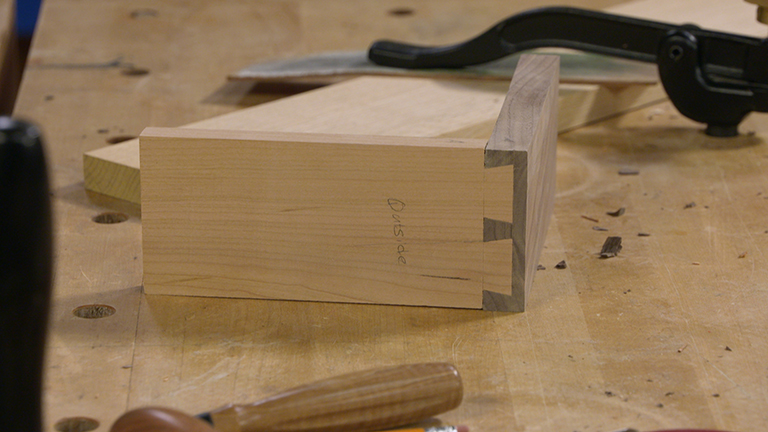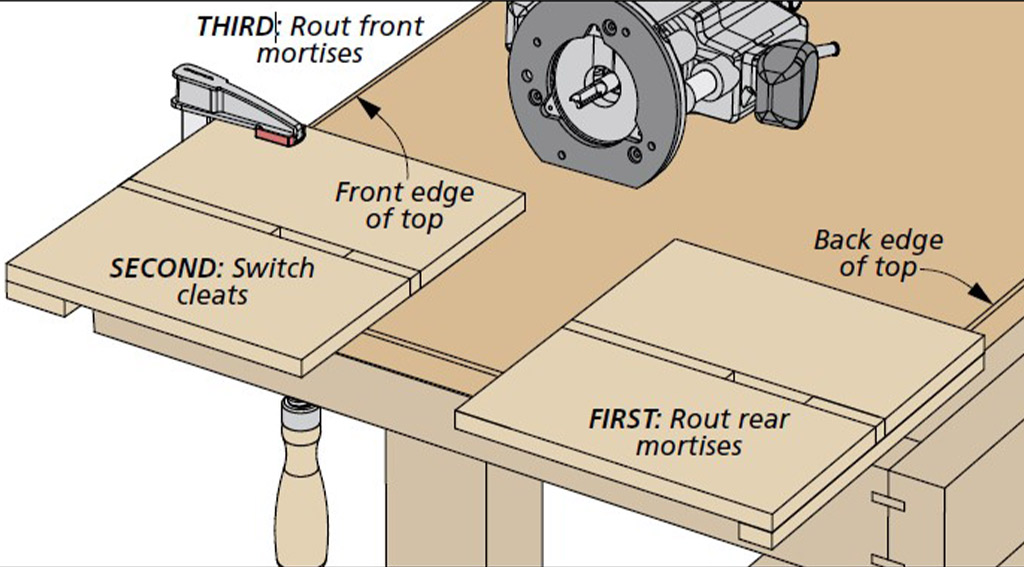Tightly mitered corners on a box or case look great. But unfortunately, when it comes to clamping, miter joints have a couple drawbacks. First, keeping the mitered faces aligned during the glueup can be difficult. And even if you succeed here, the porous end grain of the miters makes for a pretty weak glue joint. Well, a good solution for both of these problems is to add a spline across the miter joint. A spline that’s only as wide as a saw kerf can keep the miters perfectly aligned during assembly. And it adds both mechanical and gluing strength to the joint.
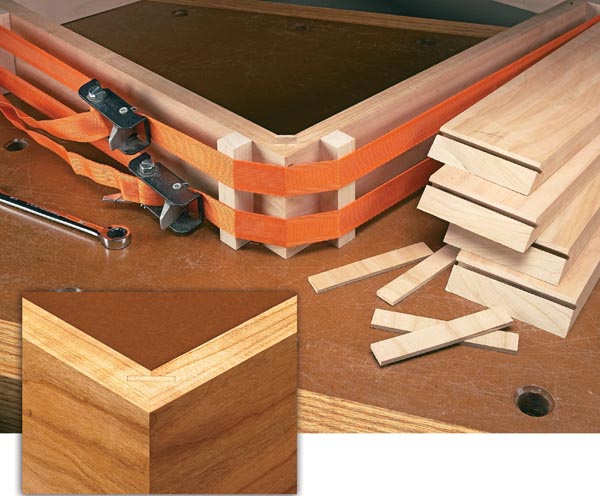
Cutting miters on the workpieces is where you start the job. Once this is done, there are two steps on the table saw to adding a spline to the joint. The first is to cut a pair of matching slots in the mitered faces. The second is to make a spline that fits the slots and connects the two halves of the joint. Before I talk about cutting the slots, take a quick look at the drawing. Here, you’ll see not only how the slot is cut but also where to place the groove and how deep to make it. I place the groove in the “heel” of the miter — about 1/8" from the edge in 3/4"-thick stock. This is the thickest part of the mitered face and it allows you to cut a deep slot and use a wide spline. But a good rule of thumb is to not extend the slot through more than about half the thickness of the workpiece.
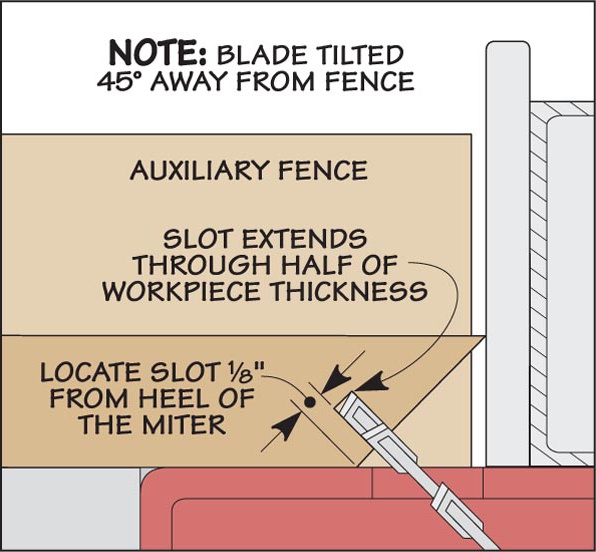
The rip fence is used to locate the slot at the same spot in each mitered face. The distance between the blade and the rip fence determines its position. The tip of the miter simply slides along the fence as you make the cut.
With the blade adjusted and the fence locked in position, you’re ready to cut the grooves. When cutting the grooves in narrow pieces, I use the miter gauge with an auxiliary fence to feed the workpiece and back up the cut. You want the slots to be perfectly aligned across the two mitered faces. The key to this is to make certain the workpiece is flat on the saw table and the tip of the miter stays in contact with the rip fence.
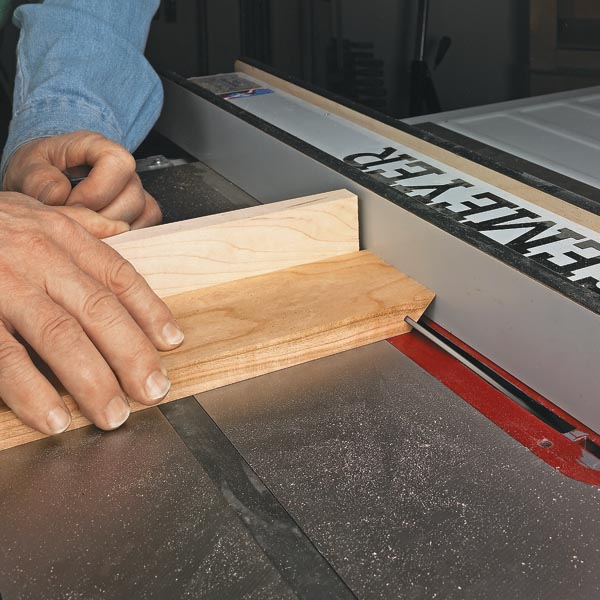
For narrower, hardwood assemblies, I use solid-wood “crossgrain” splines. The easiest way to make a hardwood spline is to simply rip a thin strip from a board. But now imagine putting a lot of stress on a miter joint assembled with a thin, long-grain spline. The spline would likely split along the grain and the joint would come apart. The best way to make a hardwood spline is shown in the drawings below. This technique for cutting crossgrain splines from a short scrap is just a little more involved but the result has a couple of big advantages. Since the grain of the spline is running across the joint, there’s no chance of the spline splitting and the joint failing. A second benefit is appearance. The exposed end of the crossgrain spline matches the grain of the mitered pieces.
